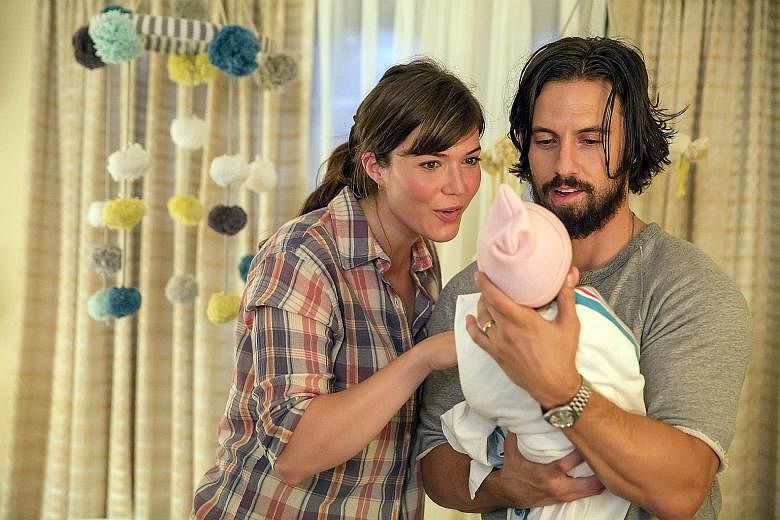NEW YORK • Can broadcast networks stay afloat when a growing pool of viewers stream towards players such as Netflix and Apple?
Ask Mr Robert Greenblatt, chairman of NBC Entertainment, and he admits: "All the excitement is about cable and streaming."
Streaming giant Netflix has lured super producers Shonda Rhimes and Ryan Murphy away from traditional television. Apple has started to shell out the US$1 billion (S$1.3 billion) slated for streaming content to actress-producer Reese Witherspoon and other show creators.
This month, Mr Greenblatt lost top executive Jennifer Salke to free-spending upstart Amazon Studios.
But NBC is positioned relatively well among the networks.
It pulled ahead of CBS in total viewers through the first 20 weeks of the 2017-2018 season, the first time it has had the lead since 2002.
Mr Greenblatt has another reason for optimism. He has in-house statistics to convince advertisers that broadcasters can make the transition to the streaming universe.
Nielsen ratings, which measure the number of viewers who tune in for shows at the time of broadcast, are down for the networks yet again - at a 10 per cent clip this season.
NBC has responded by learning to make money from viewers who stream its programmes - and now it is learning to put a number on it.
The key is gathering data from services such as NBC.com, the NBC app, video on demand and Hulu to determine how much money its shows are pulling in from streamers.
Take This Is Us, for example. According to the data, NBC has earned about 47 per cent of the revenue generated by its 2016 pilot episode from advertising through digital views.
Overall, 44 per cent of the revenue NBC has earned from This Is Us has come through digital viewership, the network said.
Similarly, the critically acclaimed sitcom The Good Place, starring Kristen Bell and Ted Danson, has earned roughly 36 per cent of its revenue from digital advertising.
The new source of revenue is NBC's attempt to make up for a larger decline in advertising dollars.
Television ad sales fell 8 per cent last year. That is why Mr Greenblatt has to make the digital business work sooner rather than later.
Not every show is making big money from digital views. About three-quarters of the revenue NBC made from the 2015 pilot of Blindspot, for instance, has been earned the old-fashioned way.
But NBC was less savvy back then in extracting money from viewers who preferred streaming.
By the time of the first This Is Us season, it had wised up, striking a deal that allowed it to earn money from Hulu ads shown during episodes of the hit tear-jerker.
Generating revenue from streaming is relatively new for the networks, said Mr Jeff Bader, NBC's president of programme planning, strategy and research.
"When I came to NBC five years ago, we were in this place with: How are we going to manage this business that's been in decline?" he added. "We were doing everything we could not to be the record industry and have our stuff pirated and not monetised."
Particularly depressing was the number of younger viewers who seemed to be changing their habits.
"For years, we were seeing our average age go up, up up," Mr Bader noted. "Younger viewers... weren't watching broadcast television in the same numbers they used to."
Once the network examined the data, however, it noted that they had not exactly abandoned NBC. They were just watching shows on their own schedules - sometimes months after the broadcast date.
NBC has intensified efforts to measure the non-traditional audience with the Winter Olympics. Its latest ratings reports have combined the number of viewers it reaches through broadcast, cable and streaming platforms under a single figure it calls total audience delivery. This is its attempt to counter the Nielsen measure, which shows a shrinking Olympics audience.
Said Mr Greenblatt: "That is the frustrating part of the whole ecosystem because we don't have a third-party objective measuring system that everyone has adopted."
Until that system emerges, his sales department has approached advertisers with a statistical portrait that is prettier than the one painted by Nielsen.
"This started for me purely on looking at viewership numbers, because I wanted to be able to make the argument, 'People aren't just bailing on network TV'," he said.
"Then it occurred to us, it's not just a viewership number we're defending. It's part of the business model now, and it's going to move that way more and more."
NYTIMES

